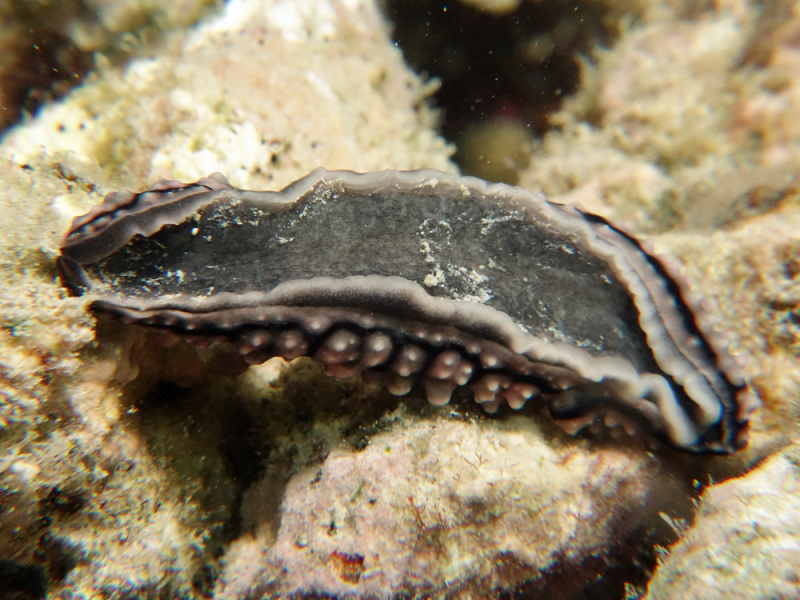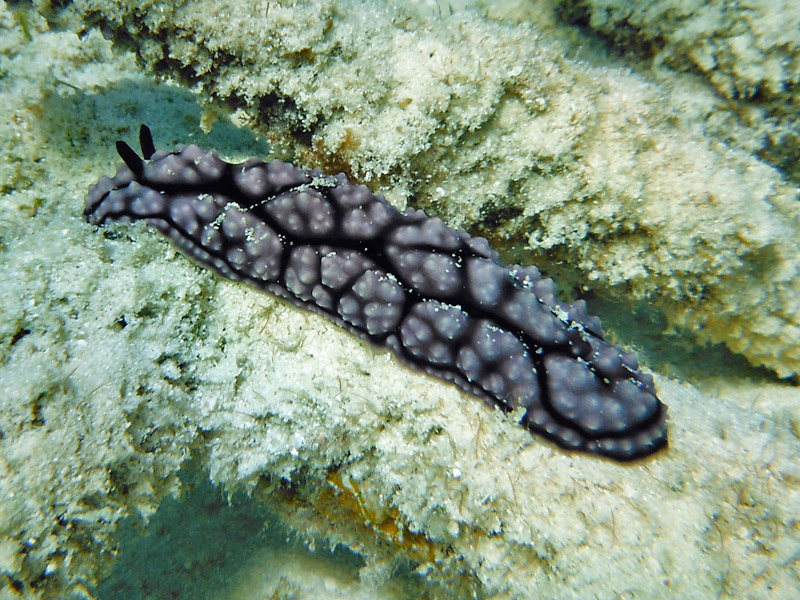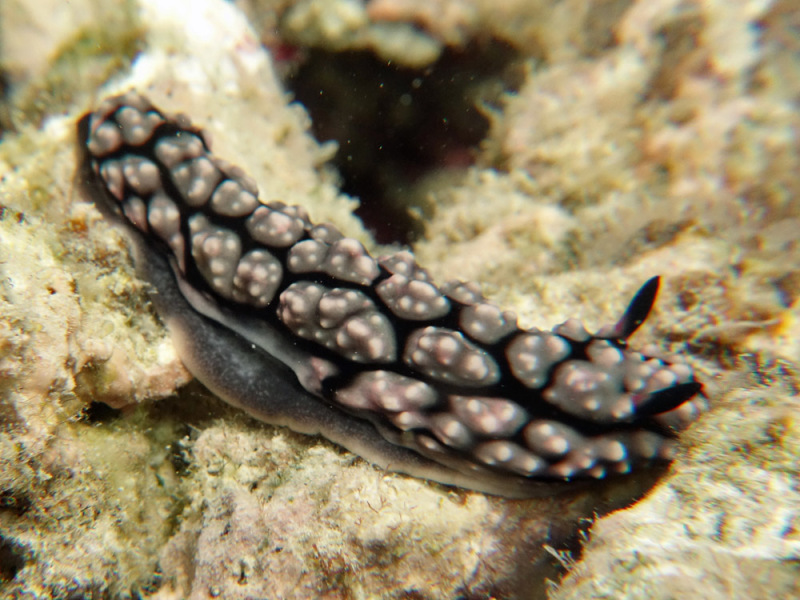�
�

©Lyle Vail: Underside of Phyllidiella pustulosa about 50 mm long at Lizard Island. The foot sole is uniformly grey, no line.
�
���
Phyllidiella pustulosa

©Lyle Vail: Underside of Phyllidiella pustulosa about 50 mm long at Lizard Island. The foot sole is uniformly grey, no line.
Kingdom
Animalia
Phylum
Mollusca
Class
Gastropoda
Order
Nudibranchia
Family
Phyllidiidae
Genus
Phyllidiella
Species
Phyllidiella pustulosa
Colours
Distinguishing features
A solid slug, black with clusters of pink/blue/purplish tubercles, a black band near the margin of the mantle and a paler band on the margin. Black rhinophores with more than 22 lamellae (tiny layers). Sole of foot uniformly grey, no darker midline.
Size
- Up to 7 cm (Length according to Humann and Deloach (2010))
Synonyms
Similar taxa
Distribution
Local abundance
- Lizard Island: Common
Web resources
References
- Bogdanov, A., A. Papu, S. Kehraus, M. Cruesemann, H. Waegele and G.M. Koenig (2020). Metabolome of the Phyllidiella pustulosa species complex (Nudibranchia, Heterobranchia, Gastropoda) reveals rare dichloroimidic sesquiterpene derivatives from a phylogenetically distinct and undescribed clade. Journal of Natural Products, 83(9): 2785-2796. LIRS catalog number 2478.
- Cortesi, F. and K.L. Cheney (2010). Conspicuousness is correlated with toxicity in marine opisthobranchs, Journal of Evolutionary Biology, 23: 1509-1518. LIRS catalog number 1360.
- Waegele, H., I. Burghardt, N. Anthes, J. Evertsen, A. Klussman-Kolb and G. Brodie (2006). Species diversity of opisthobranch molluscs on Lizard Island, Great Barrier Reef, Australia, In: Contemporary studies into the systematics and evolution of opisthobranch molluscs, (Eds. G. Brodie, S. Fahey and F.E. Wells), Records of the Western Australian Museum, Supplement 69: 33-59. LIRS catalog number 1036.











